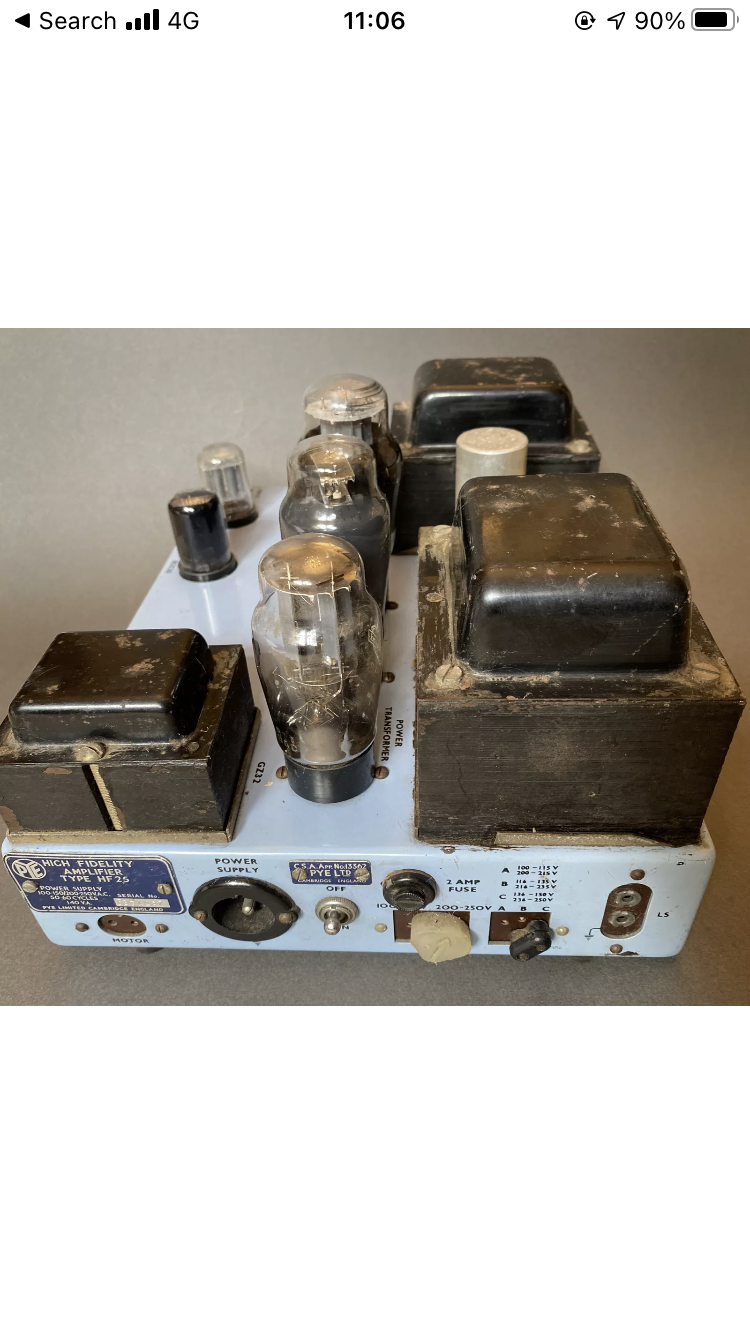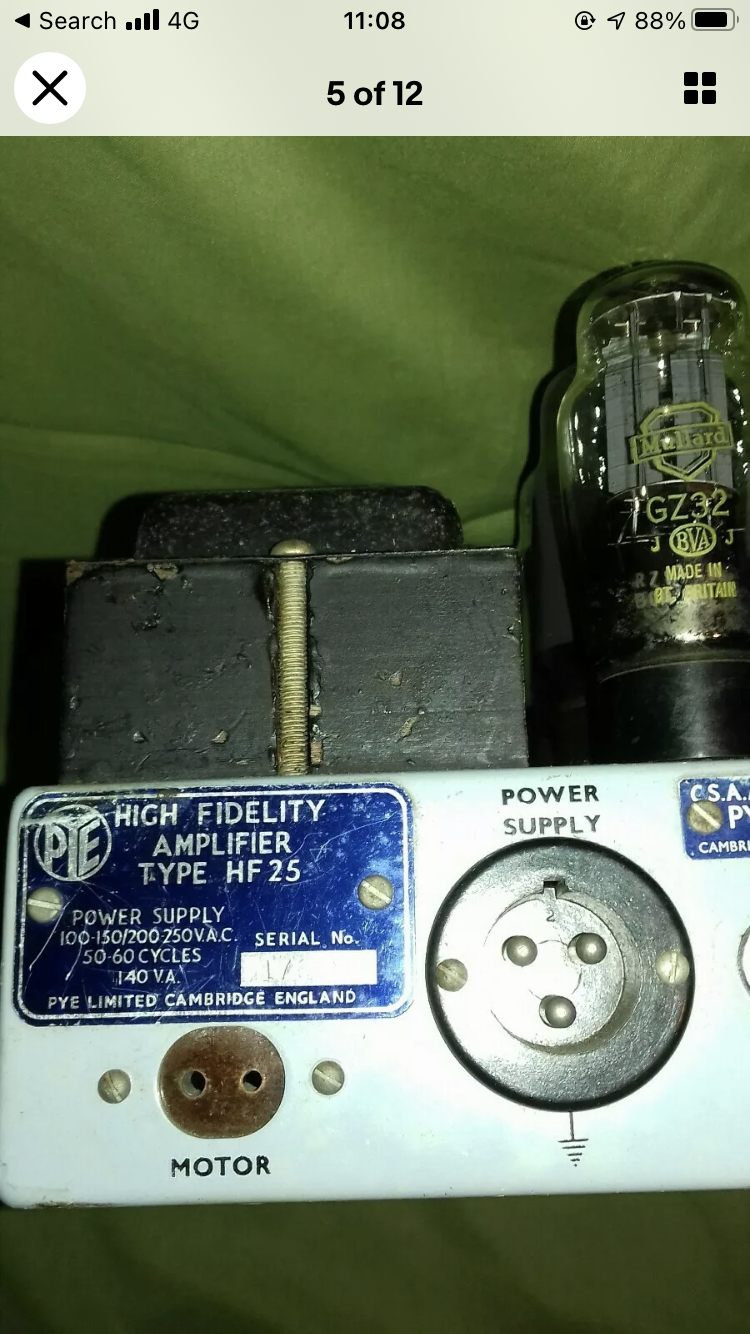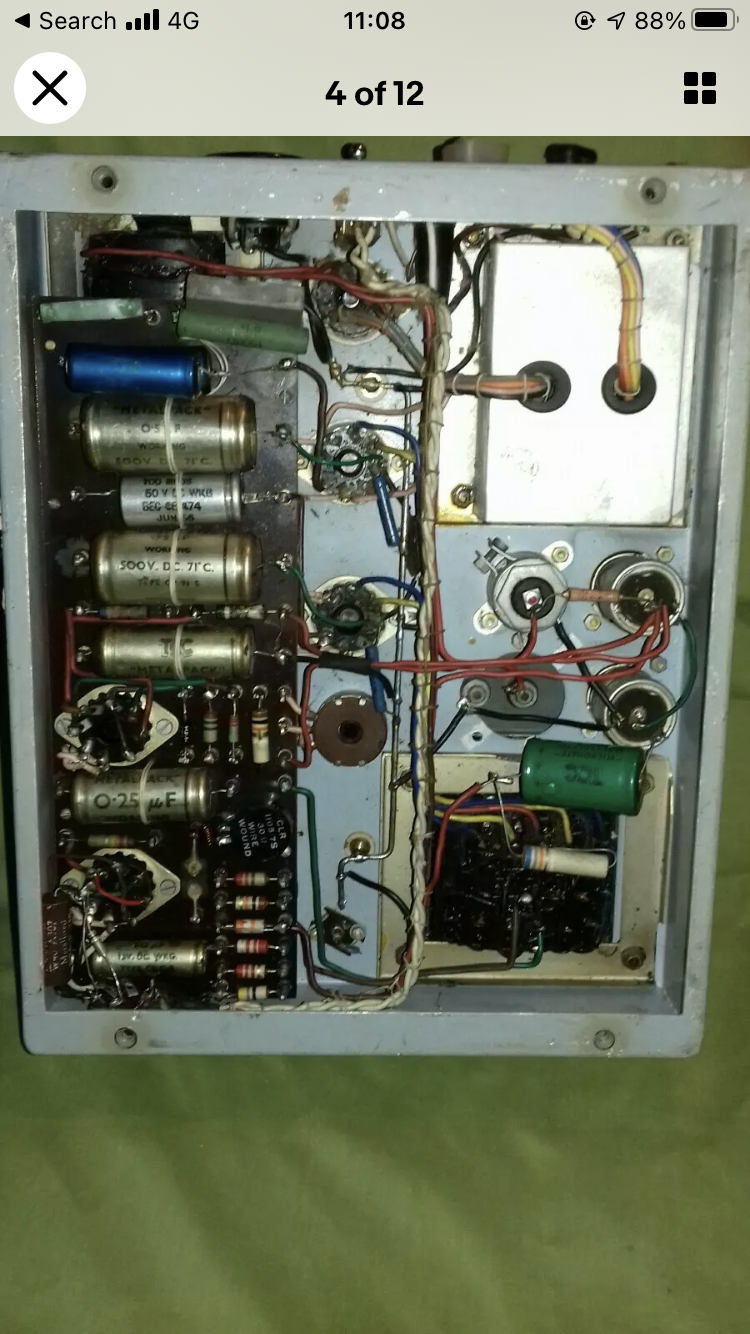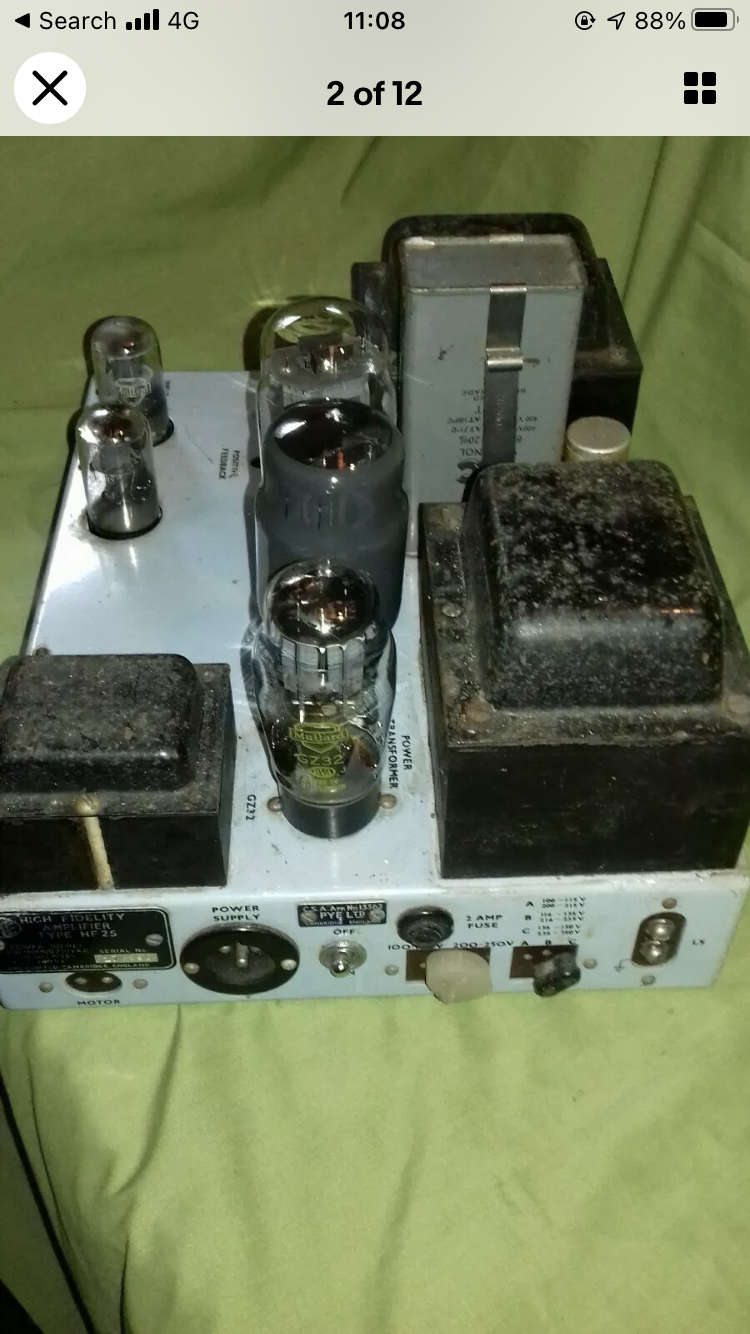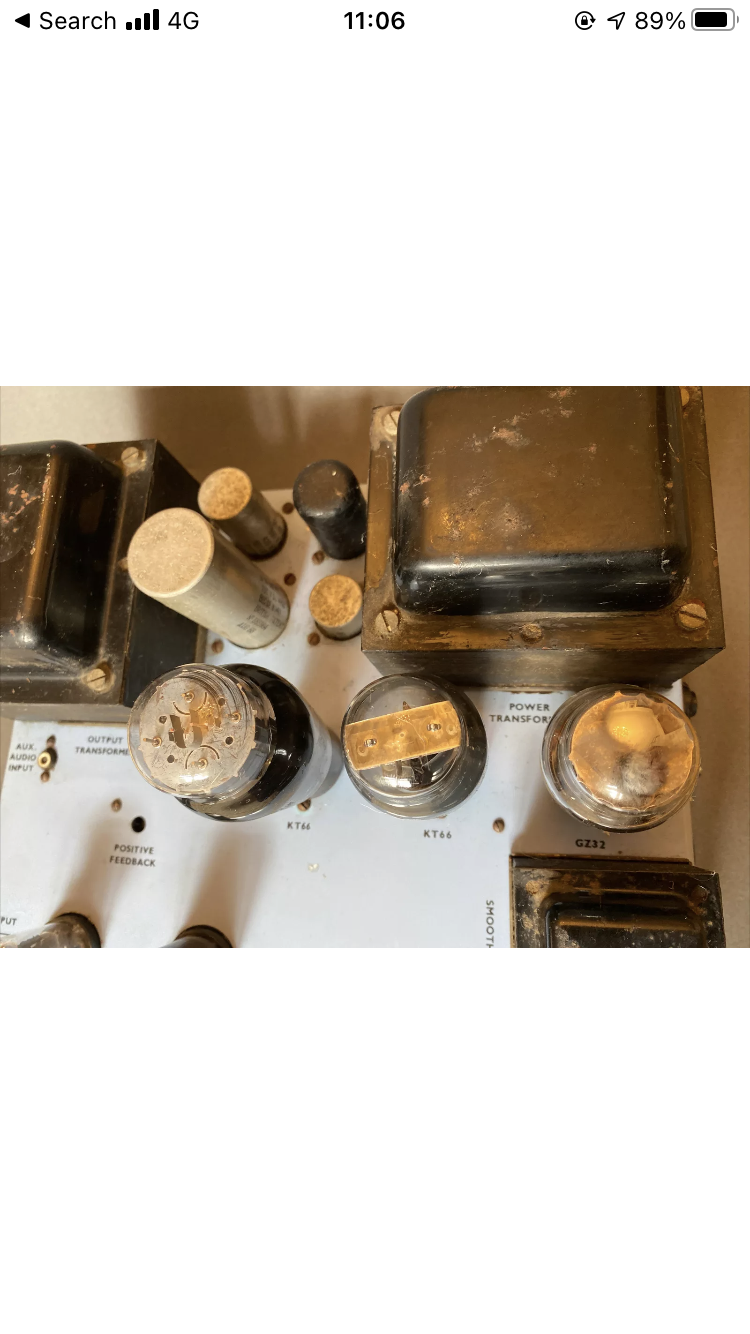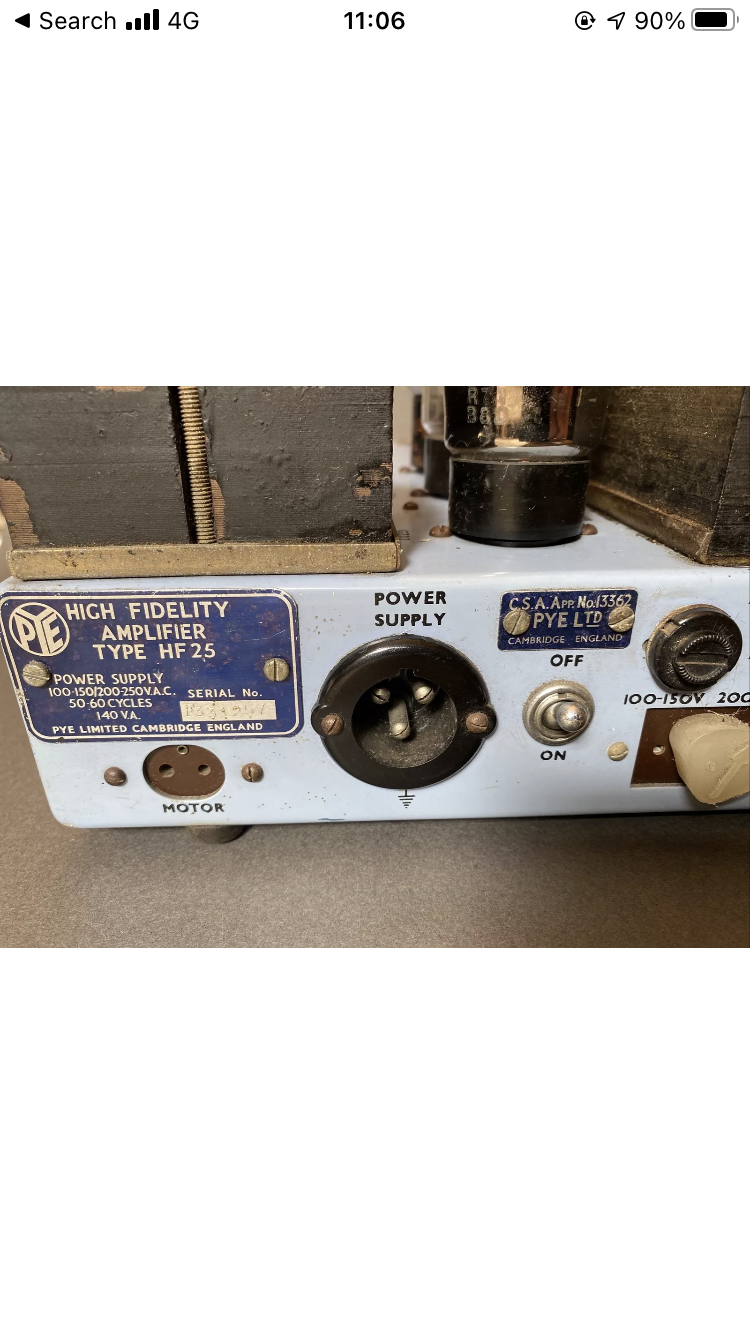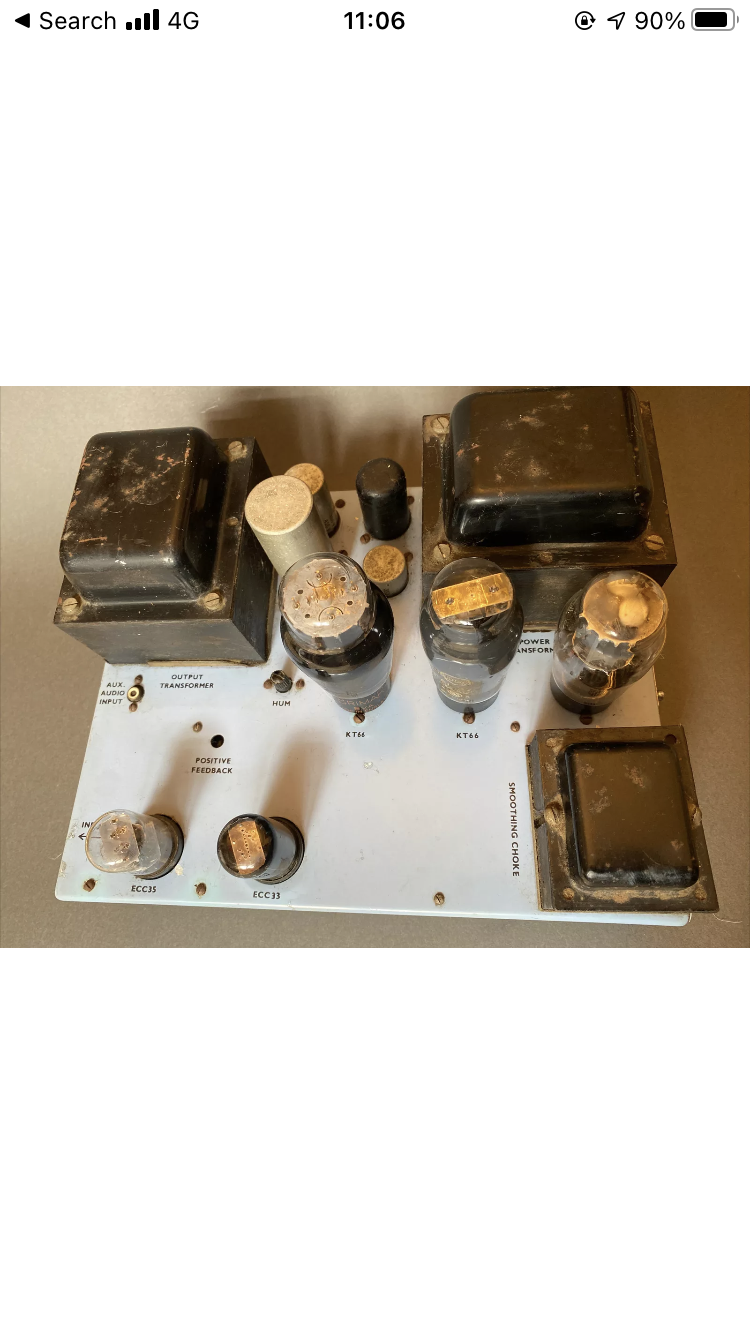Sonnyboy958
pfm Member
Hi there
After years of lusting over a pair of vintage valve amps and Pye Hf25’s in particular I finally tracked a pair (separately) down.
I will say from the outset I have no electrical/restoration experience and I have someone in mind to take on the project but I thought it might be of interest to the forum as I scoured the net for information about these amps.
I’ll include some photos and if anyone has some information/wisdom to impart please don’t hold back.
Thanks
Lee
After years of lusting over a pair of vintage valve amps and Pye Hf25’s in particular I finally tracked a pair (separately) down.
I will say from the outset I have no electrical/restoration experience and I have someone in mind to take on the project but I thought it might be of interest to the forum as I scoured the net for information about these amps.
I’ll include some photos and if anyone has some information/wisdom to impart please don’t hold back.
Thanks
Lee


